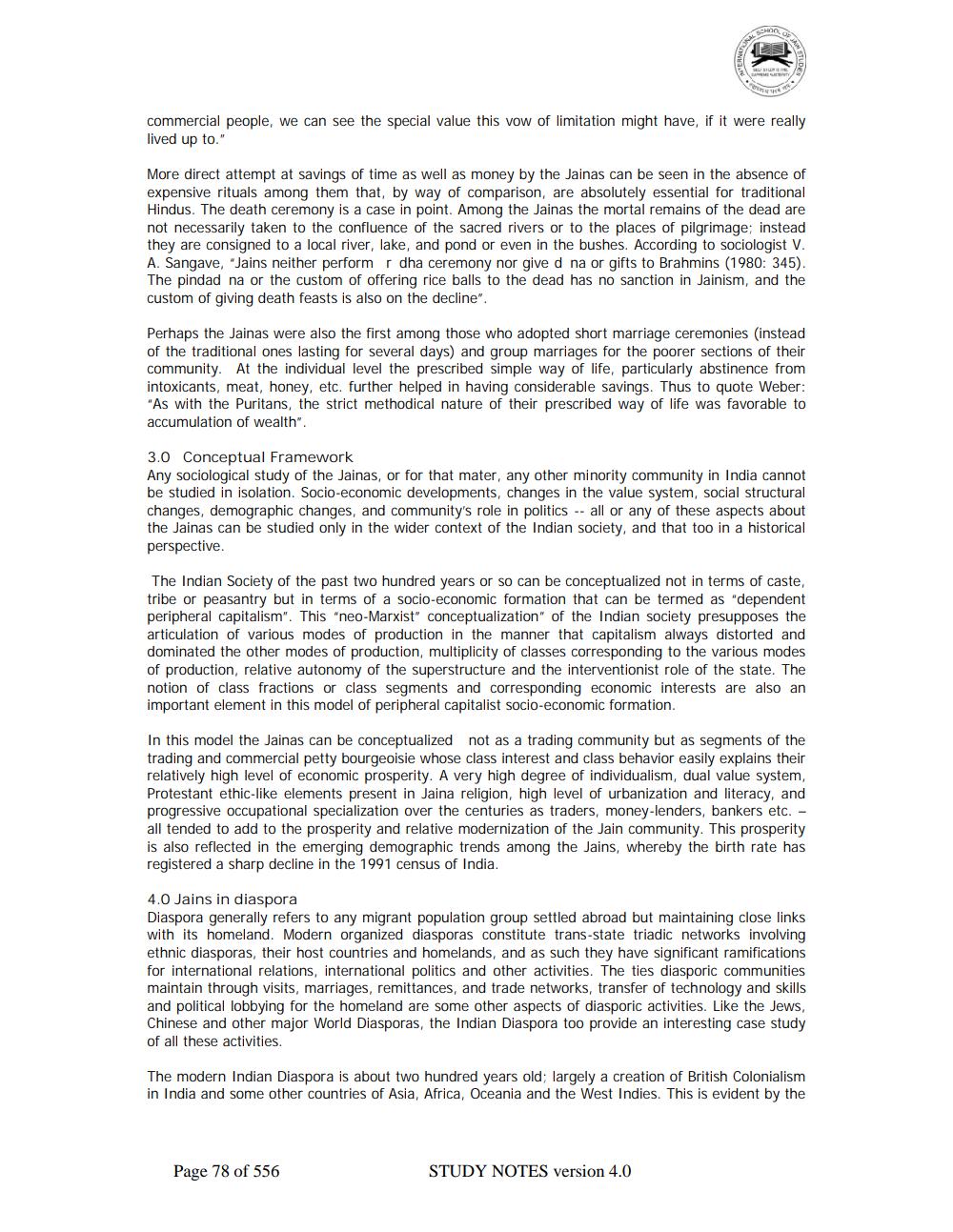________________
commercial people, we can see the special value this vow of limitation might have, if it were really lived up to."
More direct attempt at savings of time as well as money by the Jainas can be seen in the absence of expensive rituals among them that, by way of comparison, are absolutely essential for traditional Hindus. The death ceremony is a case in point. Among the Jainas the mortal remains of the dead are not necessarily taken to the confluence of the sacred rivers or to the places of pilgrimage; instead they are consigned to a local river, lake, and pond or even in the bushes. According to sociologist V. A. Sangave, "Jains neither perform r dha ceremony nor give d na or gifts to Brahmins (1980: 345). The pindad na or the custom of offering rice balls to the dead has no sanction in Jainism, and the custom of giving death feasts is also on the decline".
Perhaps the Jainas were also the first among those who adopted short marriage ceremonies (instead of the traditional ones lasting for several days) and group marriages for the poorer sections of their community. At the individual level the prescribed simple way of life, particularly abstinence from intoxicants, meat, honey, etc. further helped in having considerable savings. Thus to quote Weber: "As with the Puritans, the strict methodical nature of their prescribed way of life was favorable to accumulation of wealth".
3.0 Conceptual Framework Any sociological study of the Jainas, or for that mater, any other minority community in India cannot be studied in isolation. Socio-economic developments, changes in the value system, social structural changes, demographic changes, and community's role in politics -- all or any of these aspects about the Jainas can be studied only in the wider context of the Indian society, and that too in a historical perspective
The Indian Society of the past two hundred years or so can be conceptualized not in terms of caste, tribe or peasantry but in terms of a socio-economic formation that can be termed as "dependent peripheral capitalism". This "neo-Marxist" conceptualization" of the Indian society presupposes the articulation of various modes of production in the manner that capitalism always distorted and dominated the other modes of production, multiplicity of classes corresponding to the various modes of production, relative autonomy of the superstructure and the interventionist role of the state. The notion of class fractions or class segments and corresponding economic interests are also an important element in this model of peripheral capitalist socio-economic formation.
In this model the Jainas can be conceptualized not as a trading community but as segments of the trading and commercial petty bourgeoisie whose class interest and class behavior easily explains their relatively high level of economic prosperity. A very high degree of individualism, dual value system, Protestant ethic-like elements present in Jaina religion, high level of urbanization and literacy, and progressive occupational specialization over the centuries as traders, money-lenders, bankers etc.all tended to add to the prosperity and relative modernization of the Jain community. This prosperity is also reflected in the emerging demographic trends among the Jains, whereby the birth rate has registered a sharp decline in the 1991 census of India.
4.0 Jains in diaspora Diaspora generally refers to any migrant population group settled abroad but maintaining close links with its homeland. Modern organized diasporas constitute trans-state triadic networks involving ethnic diasporas, their host countries and homelands, and as such they have significant ramifications for international relations, international politics and other activities. The ties diasporic communities maintain through visits, marriages, remittances, and trade networks, transfer of technology and skills and political lobbying for the homeland are some other aspects of diasporic activities. Like the Jews, Chinese and other major World Diasporas, the Indian Diaspora too provide an interesting case study of all these activities.
The modern Indian Diaspora is about two hundred years old; largely a creation of British Colonialism in India and some other countries of Asia, Africa, Oceania and the West Indies. This is evident by the
Page 78 of 556
STUDY NOTES version 4.0




